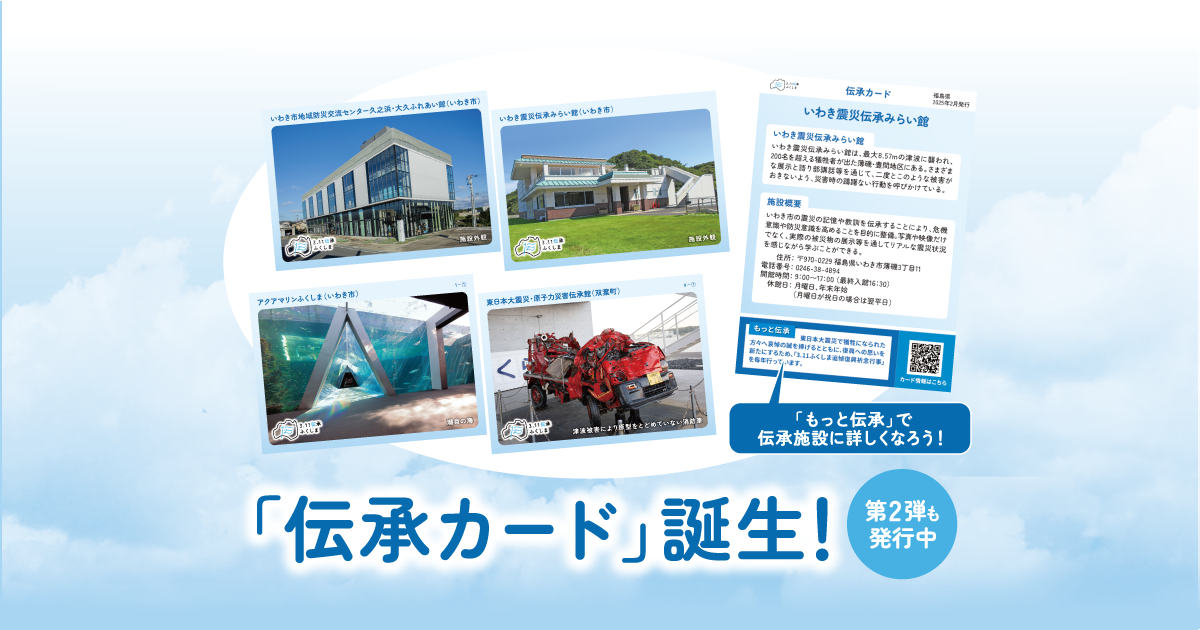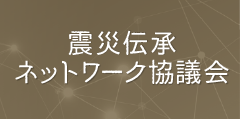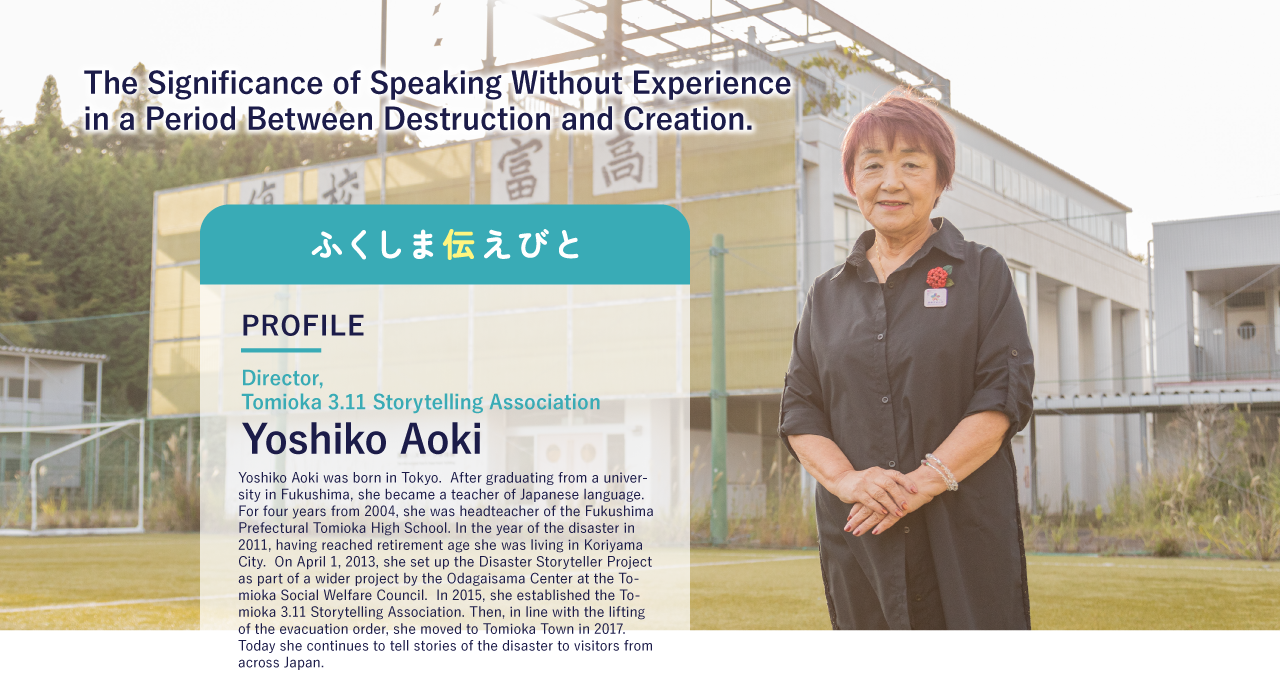
Residents of Tomioka Town Devastated by a Triple Disaster.
Supporting and Working Alongside Evacuees.
Tomioka Town is located within a 20 km radius of the Fukushima Daiichi Nuclear Power Plant. In the Great East Japan Earthquake, the town’s coastal area was hit by a tsunami of more than 20 meters in height, and due to the nuclear accident all the town’s residents were forced to evacuate to Koriyama City and other parts of Japan. In 2017, the town’s designations as a restricted residence area and an area preparing for the lifting of evacuation orders were lifted, enabling approximately 90% of the town’s residents to begin returning home. Yoshiko Aoki, director of the Tomioka 3.11 Storytelling Association, supports and works alongside residents of Tomioka Town, an area that was devastated by the earthquake, the tsunami, and the nuclear accident. Aoki says, “I wasn’t in Tomioka Town during the earthquake and ensuing nuclear disaster, but this is why I think it is significant for me to tell the town’s stories.” Prior to the disaster, Aoki served as headteacher at Tomioka High School for four years before retiring and moving to Koriyama City. She was living in Koriyama City when the earthquake struck. Aoki offered various support when residents from Tomioka Town were forced to evacuate to Big Pallete Fukushima and other areas, and this is how her current activities began.
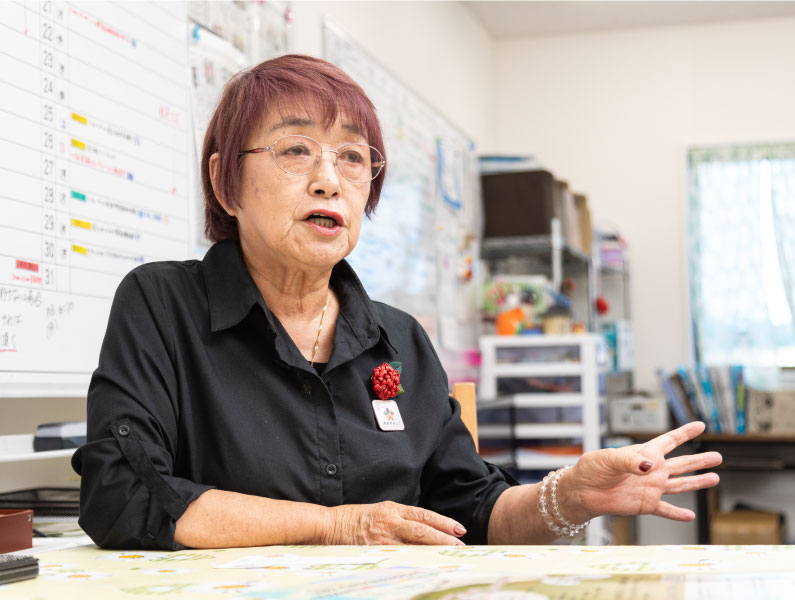
Aoki at her office in Tomioka Town. Today, her association comprises eight members working out of Sakura Mall in Tomioka Town and Koriyama City.
What Did We Lose As a Result of the Nuclear Disaster?
Finding the Answer to Achieve Reconstruction.
Aoki asks, “What did we lose from the nuclear disaster? What must be returned for us to say that reconstruction has been successful?” After the disaster, almost all of the town’s residents had nothing to wear, nothing to eat, and no where to live. For the storytellers, it was enough to simply say “We don’t have this. Please help.” However, over time, people became able to shelter themselves from wind and rain and get access to the food they needed. That said, the issues that people faced also began to differ. These issues gradually became more complex and harder to see, and storytellers simply describing their experiences wasn’t enough for the listeners to really understand. “Seeing storytelling as the mere sharing of experiences can make it narrow-minded, and there are limits to what the storyteller can explain. I believe that it is precisely because I didn’t experience these things first hand that I can arrange the experiences of others, working as an intermediary to uncover any issues,” says Aoki. In supporting evacuees from Tomioka Town and interacting with many who experienced the disaster first-hand, Aoki came to realize that “the nuclear disaster took away connections between people.”
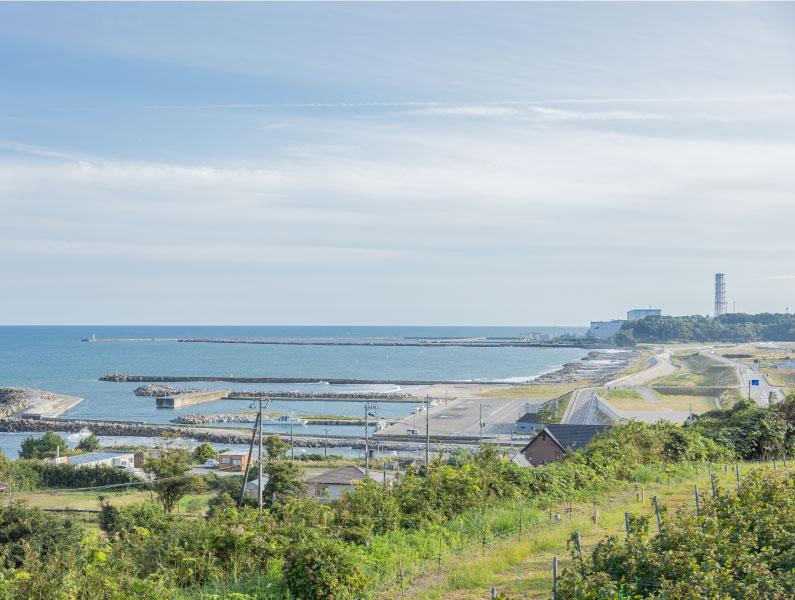
As she guides us through Tomioka Town, Aoki stops by the Tomioka Wine Domaine. The winery’s observation point overlooks the coastal area and a road that doubles as a seawall.
Using Victims’ Experiences to Search for Answers.
Applying These Answers to Recreate Connections Between People.
Following the disaster, many of the town’s citizens were forced to move away from their hometown, losing their work and purpose, and living away from their family and friends. In 2017, the evacuation order placed on Tomioka Town was lifted. With this came a new division, however, with some choosing to return home and some choosing to move elsewhere. Although everyone had to evacuate at the same time in line with the government’s order, returning to the town was an individual choice. Returning to Tomioka Town would mean leaving their current lives, while remaining in their current place as an evacuee would mean saying goodbye to their hometown. Both decisions meant hardship and sadness. At the time, Aoki realized that there was only so much he could do when supporting these individuals. She understood that the only thing for storytellers to do was speak about their experiences as is. She describes the current time as the period between destruction and creation, asking the listeners, “What can we do to get out of this rut? Will you join me in finding the solution?” The nuclear disaster took away connections between people. The solution to recreating this connection could be found in the activities of storytellers, who play a key role in discovering issues from their experiences and working with listeners to find the answer. For us, it is because we haven’t been through the same experiences that we must continue to tell our stories.
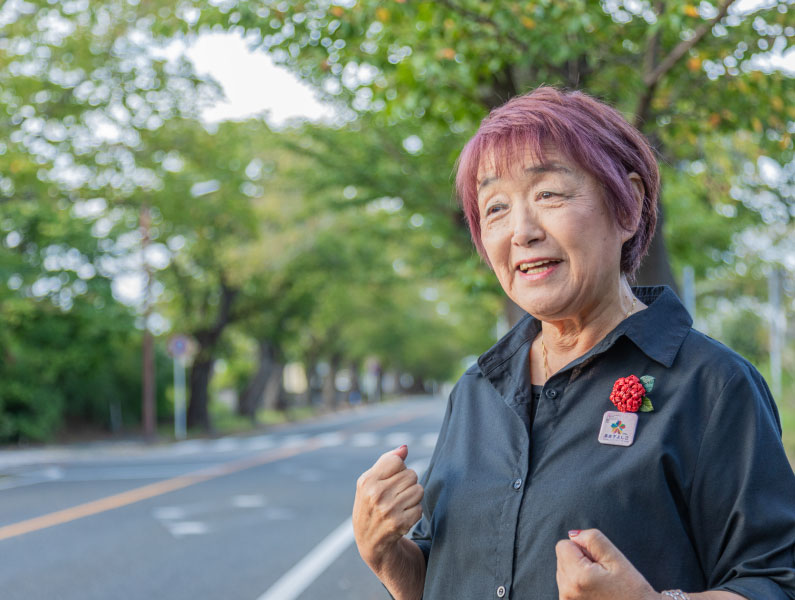
A famous row of cherry trees in the Yonomori area. Aoki talks about the significance of continued storytelling in the ever-changing Tomioka Town.
Tomioka 3.11 Storytelling Association
〒979-1111
416 Kobama Chuo, Futaba Times 1F, Tomioka-machi, Futaba-gun, Fukushima Prefecture
Office 1, Sakura Mall Tomioka
TEL:0240-23-5431

